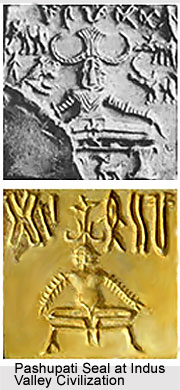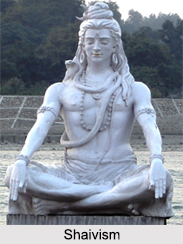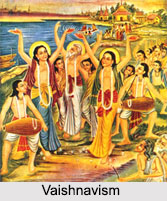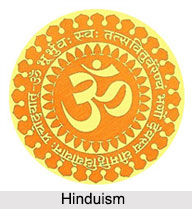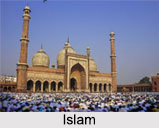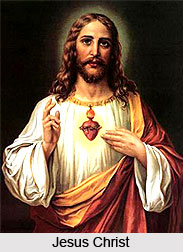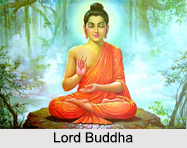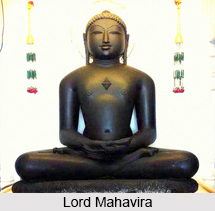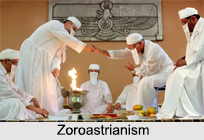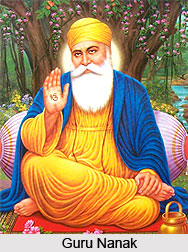 The word Sanskara in Sanskrit signifies cultural heritage and upbringing in modern Hindi. In Sanskaras the rituals executed are Homa or fire sacrifices of complicated and intrinsic designs and complex method. The Sanskara helps to lead a life without any fear and danger. Thus each important episode of a Human life is to be celebrated by undertaking a particular Sanskara which must be well performed maintaining all customs.
The word Sanskara in Sanskrit signifies cultural heritage and upbringing in modern Hindi. In Sanskaras the rituals executed are Homa or fire sacrifices of complicated and intrinsic designs and complex method. The Sanskara helps to lead a life without any fear and danger. Thus each important episode of a Human life is to be celebrated by undertaking a particular Sanskara which must be well performed maintaining all customs.
Sanskaras in Hinduism is a religious rite performed before and after the child birth. At the birth of a child the father should feed two Brahmans, seated with their faces to the east. Then according to his means should offer sacrifices to the gods and progenitors. Then the father of the child must present the Brahmans with balls of meat mixed with curds, barley, and jujubes. The Brahmans must perform such a Sraddha, with all its offerings and circumambulations, on every occasion for good fortune.
As per the ritual of Sanskaras after the birth of the child in the tenth day the father names his child. The first term of the name shall be the appellation of a god, the second, of a man. A name of the child should not be without meaning. It should not be indecent, or absurd, or ill-omened, or fearful. The name must consist of an even number of syllables; it should not be too long, or too short, or too full of long vowels, but should contain a proportion of short vowels, and can be easily pronounced. After this and the succeeding initiatory rites, the purified youth is to acquire religious knowledge, in the mode that has been described, in the dwelling of his spiritual guide.
Again in Hinduism Sanskara or Samskara are a series of sacraments, sacrifices and rituals. Sanskaras serve as rites of passage and mark the various stages of the Human life and to signify entry to a particular Ashrama. It is believed that all human beings, specially the Dvija or twice-born must perform a number of sacrifices with oblations for gods, relatives and guardians as per Vedic norms for leading Dharmic or virtuous life.
There are various numbers of Sanskaras, they are as follows, Garbhadhana is the act of conception or insemination. Then is the Pum-savana as mentioned in the Grihya-Sutra. Simantonnayana is performed during pregnancy. Jata-karman is related with birth-rites. The naming of the child is called namakarman. Niskramana is executed when the child is one and a half months or four months. Anna-prashana is performed when the child is six months and eats first food or cereals. When the hair of the child is first cut then it is called Cuda-karman or mundana. In the Purana-Sarvasva it is mentioned that Karna-vedha means ear-piercing ceremony. Vidyarambha is a Sanskara for the commencement of studies. Upanayana is the thread ceremony or wearing of the sacred thread between six to eight years of age. Vedarambha is the ritual performed when the child first starts his Vedic studies. Then is the Kesanta which is getting rid of hairs. Samavartana is the completion of education and the end of Brahmacharya life. Next is the Vivaah or the marriage ceremony. Last rite is the Antyesti kriya or the last rites performed at the time of death.
